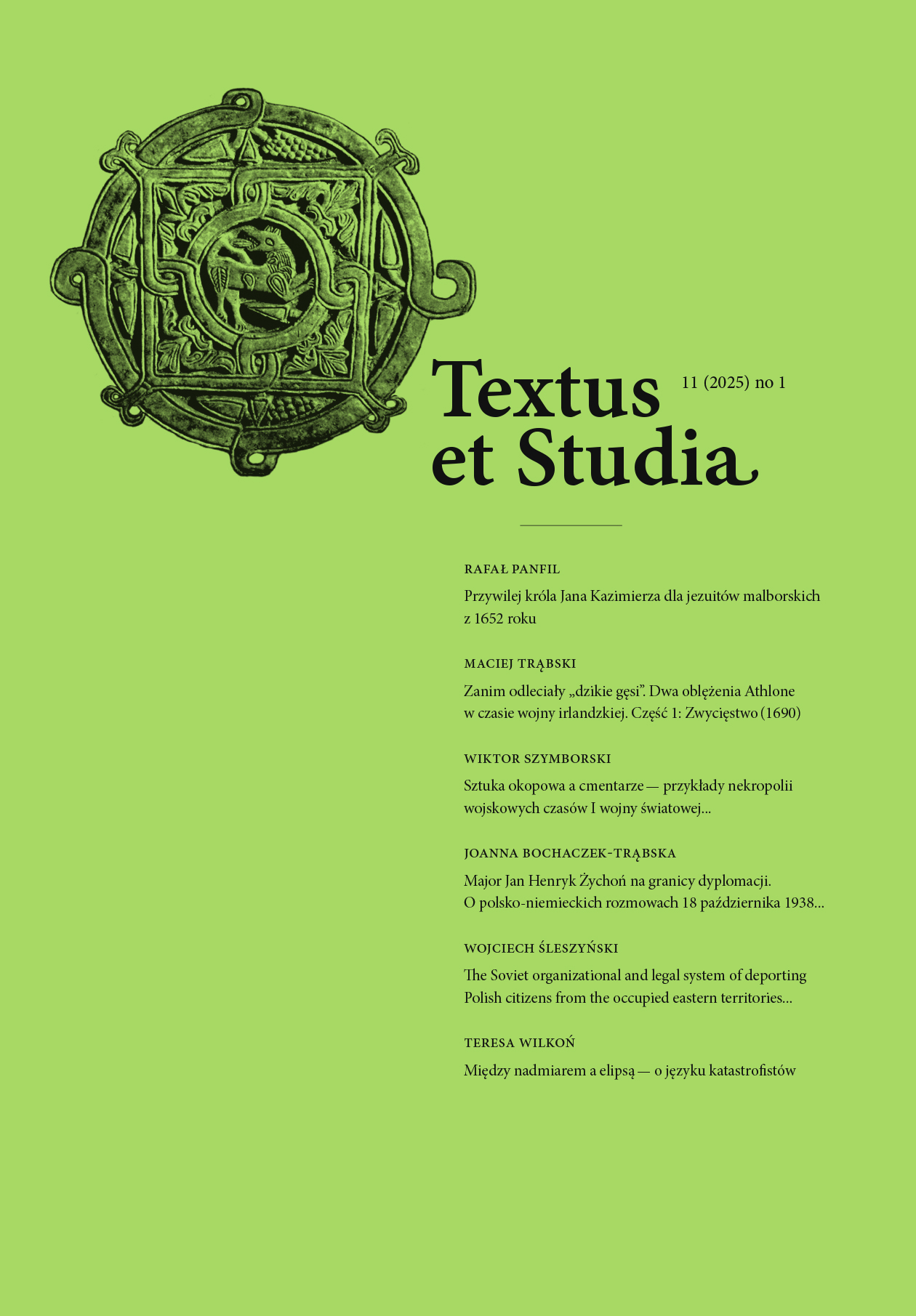The Soviet organizational and legal system of deporting Polish citizens from the occupied eastern territories of the Second Polish Republic. A historical and legal study based on the example of the first deportation on February 10, 1940
DOI:
https://doi.org/10.15633/tes.11105Keywords:
organization, law, repression, propaganda, deportations, Soviet Union, World War II, the Second Polish Republic, eastern territoriesAbstract
With the crossing of the Polish-Soviet border by the Red Army on September 17, 1939, the Soviet authorities had prepared a number of directives to regulate political and social issues. The deportation of military settlers and foresters organized in February 1940 was also subject to these processes. In the Soviet state, bureaucratic reality was more important than the actual observance of written principles in their implementation. This gave the impression of compliance with all legal norms and whenever such a need arose, shortcomings could be argued as a human factor error. The system created in this way operated at all levels of the Soviet state, and the apparatus of repression also applied these principles. The legal legalization of taken actions was a key element of the legal reality of the Soviet state. It gave a full sense of operating within a legally and universally binding legal system for people executing orders.
References
Chackiewicz A., Aresztowania i deportacje społeczeństwa zachodnich obwodów Białorusi (1939–1941), in: Społeczeństwo białoruskie, litewskie i polskie na ziemiach północno-wschodnich II Rzeczypospolitej w latach 1939–1941, red. M. Giżejewska, T. Strzembosz, Warszawa 1995, pp. 133–160.
Deportacje obywateli polskich z Zachodniej Ukrainy i Zachodniej Białorusi w 1940 roku, red. W. Komogorow et al.; wybór i oprac. nauk. W. Christoforow, tłum. M. Słoń-Nowaczek, Warszawa–Moskwa 2003.
Gnatowski M., 17 września 1939 r. — agresja czy wyzwolenie? Refleksje historyka w świetle nowych źródeł, w: Radziecka agresja 17 września 1939 r. i jej skutki dla mieszkańców ziem północno-wschodnich II Rzeczypospolitej, red. M. Gnatowski, Białystok 2000.
Gnatowski M., W radzieckich okowach (1939–1941). Studium o agresji 17 września 1939 r. i radzieckiej polityce w regionie łomżyńskim w latach 1939–1941, Łomża 1997.
Gurjanow A. E., Polskije spiecpieriesielency w SSSR w 1940–1941 gg., in: Riepriessii protiw polakow i polskich grażdan, Моskwa 1997 (Istoriczeskije sborniki „Мiemoriała”, 1).
Matieriały „Osoboj papki” Politbiuro CK RKP(b)-WKP(b) po woprosu sowietsko-polskich otnoszenij 1923–1944 gg., riedaktor I. I. Kostiuszko, Moskwa 1997.
Śleszyński W., Okupacja sowiecka na Białostocczyźnie 1939–1941. Propaganda i indoktrynacja, Białystok 2001.
„Zachodnia Białoruś” 17 IX 1939 — 22 VI 1941, t. 2: Deportacje Polaków z północno-wschodnich ziem II Rzeczypospolitej 1940–1941, red. B. Gronek, G. Jakubowski, przekł. z jęz. ros. M. Słoń-Nowaczek, Warszawa 2001.
Downloads
Published
Issue
Section
License
Copyright (c) 2025 Wojciech Śleszyński

This work is licensed under a Creative Commons Attribution 4.0 International License.
Authors who publish with this journal agree to the following terms:
- Authors retain the copyright and full publishing rights without restrictions, and grant the journal right of first publication with the work simultaneously licensed under a Creative Commons Attribution 4.0 International License that allows others to share the work with an acknowledgement of the work's authorship and initial publication in this journal.
- Authors are able to enter into separate, additional contractual arrangements for the non-exclusive distribution of the journal's published version of the work (e.g., post it to an institutional repository or publish it in a book), with an acknowledgement of its initial publication in this journal.
- Authors are permitted and encouraged to post their work online (e.g., in institutional repositories or on their website) prior to and during the submission process, as it can lead to productive exchanges, as well as earlier and greater citation of published work (See The Effect of Open Access).

